MuscleTech is back with an exciting update to their hit pre-workout, EuphoriQ. The new V2 formula, launched at the 2024 Mr. Olympia, builds upon the original by shifting to a more energized, performance-driven supplement.
EuphoriQ fans will be happy to hear they're continuing to use enfinity® paraxanthine, the industry's first caffeine replacement. This provides clean, sustained energy without the jitters or crashes of traditional caffeine.
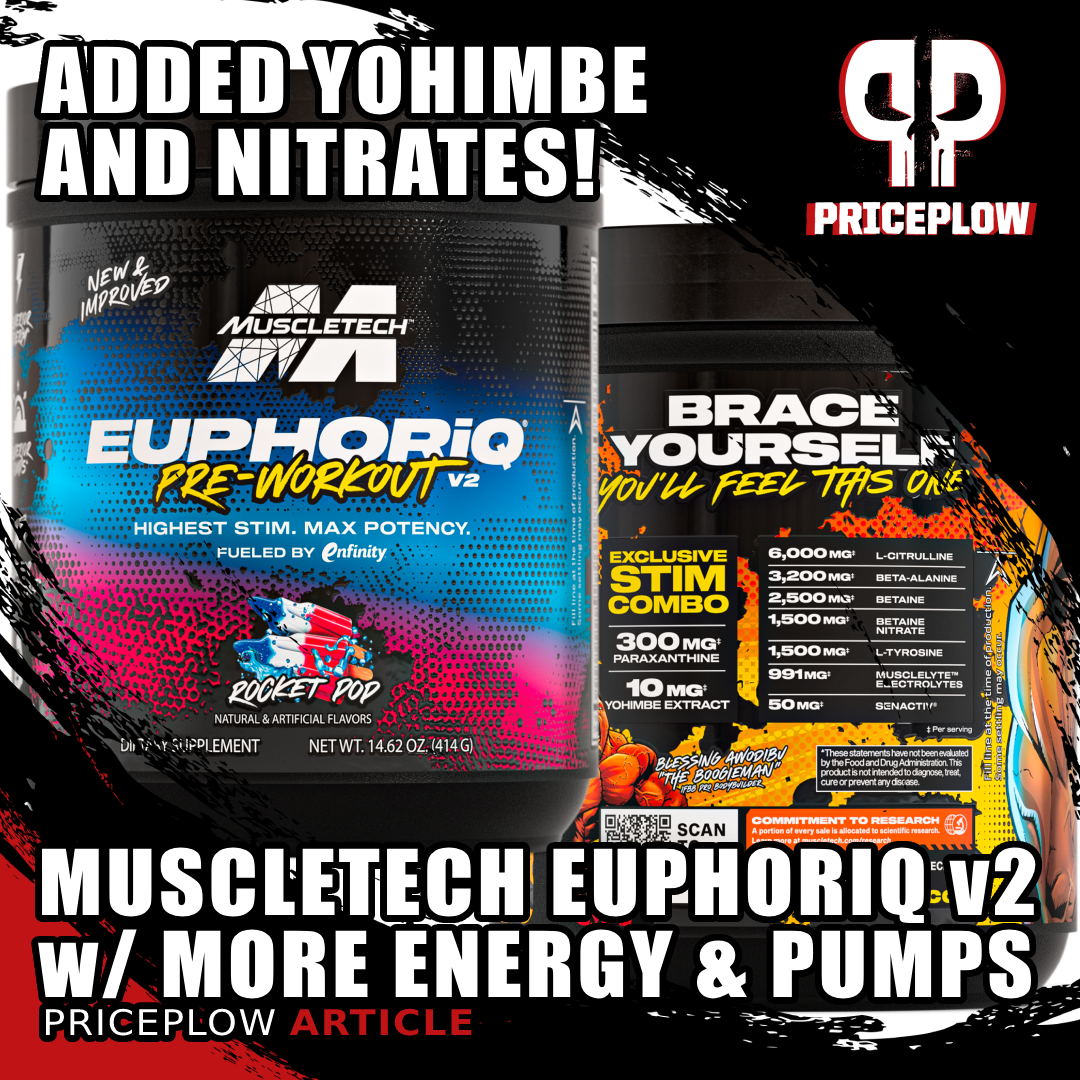
MuscleTech EuphoriQ V2 is here! It still has 300mg enfinity paraxanthine, but now supports more citrulline, added betaine nitrate, and a small hit of yohimbe!
EuphoriQ V2 Brings Some Powerful Changes
But that's not all — MuscleTech listened to user feedback and introduced key improvements, including:
- An increased dose of L-citrulline for better pumps
- The addition of betaine nitrate for enhanced nitric oxide production
- Added yohimbe extract for an extra energy kick
- Boosted the dose of L-tyrosine for enhanced focus
- Added Senactiv® to enhance exercise performance and endurance
- Included the MuscleLyte™ electrolyte blend first seen in MuscleTech's 100% EAA+ to round out the formula
There are many updates here, so we wanted to give you a full ingredient-by-ingredient breakdown to show how each addition will affect your training and well-being. Plus, we'll dive into the ingredients still in the formula from the original EuphoriQ supplement for a thorough overview.
Keep reading to see how this formula can help you crush your workouts and reach your goals.
MuscleTech EuphoriQ Pre-Workout – Deals and Price Drop Alerts
Get Price Alerts
No spam, no scams.
Disclosure: PricePlow relies on pricing from stores with which we have a business relationship. We work hard to keep pricing current, but you may find a better offer.
Posts are sponsored in part by the retailers and/or brands listed on this page.
This area is reserved for Team PricePlow's upcoming Product Update video.
Subscribe to our channel and sign up for notifications so you catch it when it goes live!
EuphoriQ V2 Ingredients Explained
In a single 1 scoop (17 gram) serving of EuphoriQ V2, you get the following:
-
L-Citrulline – 6,000 mg
Citrulline is an amino acid that upregulates your body's production of nitric oxide (NO),[1] and this dose is now at 6 grams compared to the 4 grams in the original EuphoriQ.
Citrulline is a conditionally essential amino acid -- even though your body can make some citrulline on its own, it can't make enough to fully satisfy your requirements for citrulline during periods of increased metabolic stress, like periods of injury or convalescence. Or, in our cases, we could use more for hard training.
Citrulline is the industry's go-to NO booster, which is interesting because citrulline isn't even what directly increases your NO production: citrulline gets converted into arginine, which is what actually boosts NO.
If you're wondering why we haven't tried supplementing with arginine instead, the answer is we did – although arginine was used to boost NO for a long time, it fell by the wayside when research emerged showing that citrulline actually raises blood arginine levels more effectively than arginine itself.
The reason for this is that arginine gets broken down by something called the first pass effect, a digestive phenomenon where nutrients are digested in the stomach before they can be absorbed into the bloodstream through the intestines.
Citrulline is immune to the first pass effect, making it much more bioavailable than arginine,[2,3] so that's why brands intelligently opt for citrulline instead. We could probably find MuscleTech pre-workout labels from the 2000s using L-arginine. Those were good, but this is far greater. And we'll have even more nitric oxide production from a new ingredient to the formula, betaine nitrate, later.
Why increased NO is good
Having more NO causes more vasodilation, a phenomenon where blood vessels expand and allow more blood to flow through them. This improves circulation and reduces strain on the heart while decreasing blood pressure.[4-6]
As a result, oxygen and nutrients get delivered more efficiently to your tissues, including your muscles. And moreover, the toxic byproducts of normal cellular metabolism, which can cause muscular fatigue as they build up, get removed more efficiently.
This is the main reason why you see so many NO boosters on the supplement market today: all of this adds up to improved athletic performance.
The research shows that citrulline supplementation can:
- Improve power by increasing oxygen uptake[7]
- Increase time to exhaustion during exercise[8]
- Decrease muscular soreness following exercise[8]
- Increase growth hormone (GH) secretion in response to exercise[9]
- Reduce amino acid catabolism[10]
- Trigger the synthesis of new muscle[11,12]
Citrulline and waste removal
Citrulline can also increase your blood concentrations of ornithine,[13] an amino acid that helps detoxify your body of ammonia,[14] which is one of those pesky metabolic byproducts we alluded to earlier.
Ammonia buildup can cause mental and physical fatigue, so increasing ornithine levels is one of the means by which citrulline supplementation can boost endurance.
Of course, hitting the gym hard is never enough – the overwhelming majority of our adaptation to exercise occurs while we sleep, so getting lots of restful sleep is key to reaching your athletic potential.
And ornithine seems to help with this, having been shown to improve sleep quality and reduce stress levels in those who take it. One reason for this seems to be that ornithine can decrease your ratio of cortisol to DHEA.[14]
A 6 gram dose in EuphoriQ V2!
The Arginine Citrulline Cycle with a breakout showing the arginine-to-nitric oxide reaction. Image courtesy Wikimedia with added biochemistry sources.[15,16]
The clinically validated minimum effective dose of citrulline is about 3 grams, and here EuphoriQ V2 upped the dose to 6 grams (previously it was 4), so that's good – the effects of citrulline have been shown to increase dose-dependently.[17]
So more is better in this case – up to a point of course. The point of diminishing returns on citrulline appears to be 10,000 milligrams per day.[18] So, while it's not the maximum possible dose, you're still getting more bang for your buck at a 6 gram vs. a 3 or 4 gram dose.
There have been many more successful studies on a 6 gram dose of L-citrulline, showing that it can improve performance and endurance in healthy adults.[18,19] Therefore, it shows that MuscleTech did their research here with this updated dose to ensure EuphoriQ V2 performs even better.
-
Beta-alanine – 3,200 mg
Beta-alanine is an ergogenic aid, defined as a technique or substance used for the purpose of enhancing performance.[20] It's generally used to increase athletic endurance.
This is one of the oldest ingredients in the supplement industry today, and we don't think formulators will stop using it any time soon, because it works really well.
Beta-alanine → carnosine, a lactic acid buffer
Beta-alanine plus histidine, an essential amino acid that's abundant in pretty much everything we eat, forms a molecule called carnosine, which mostly gets deposited in your brain and muscle tissue, where it helps remove lactic acid.[21]
The 2012 meta analysis showed who beta alanine may work best for,[22] but future data expanded our knowledge.
This buffering of lactic acid is key to beta-alanine's endurance-boosting effects, because the buildup of lactic acid in muscle tissue is a major factor in the neuromuscular fatigue that inevitably sets in once you've been doing an intense workout for long enough.
Here we actually have a story similar to what we discussed in the citrulline section above: supplementing directly with carnosine isn't a great way to raise carnosine blood levels, because the oral bioavailability of the carnosine molecule itself is pretty low. So we supplement with the precursor instead, which is significantly more bioavailable.
In fact, there's some research that specifically shows how beta-alanine availability is the rate-limiting step in your body's synthesis of carnosine.[23,24]
So where is beta-alanine the most useful? Current research shows that beta-alanine is particularly good at benefiting workouts conducted at an intensity level that can be sustained for 30 seconds to 10 minutes.[21-28]
We like seeing the 3,200 mg dose being used, because that's the one that has been validated over and over again in the research on beta-alanine and athletic performance.
A word on those tingly tingles!
If you haven't taken beta-alanine before, you're in for a treat! The beta-alanine tingles that happen in your upper body are a supplement rite of passage – and don't worry, researchers regard these tingles as benign.[29]
-
Betaine Anhydrous – 2,500 mg
Betaine, also known as trimethylglycine (TMG), is another ergogenic aid. However, it has a very different mechanism of action compared to beta-alanine – betaine is a bit more like creatine in the way it works.
Boost ATP production
A landmark 2013 study showed that 2.5 grams of betaine every day can have profound effects on body mass and strength[30]
We often use creatine as a point of reference for understanding betaine -- although these compounds are a little different, they have some key attributes in common.
Creatine and betaine are both osmolytes that increase cellular hydration and increase adenosine triphosphate (ATP) production.[31] Creatine does this by donating phosphate groups to the ATP production process, whereas betaine donates methyl groups.[31]
We harp on maximizing ATP production all the time here on The PricePlow Blog, because ATP is incredibly important for peak mental and physical performance.
Put simply, ATP is the gas to your body's engine. It is the molecule that actually contains the energy that your cells consume to do metabolic work.
Improve methylation, a crucial metabolic process
Betaine's capacity for donating methyl groups actually goes way beyond even ATP production – methylation is involved in many different metabolic processes and touches pretty much every aspect of bodily function.
For instance, you need lots of methyl groups and methylation to manage your body's blood levels of homocysteine, which is a byproduct of methionine metabolism. High levels of homocysteine in your blood have been linked to calcification of the arteries, heart attack, and stroke, among other things – it's a major risk factor for cardiovascular illness.[32]
Although it won't affect tomorrow's workout, ensuring that your homocysteine blood levels stay under control is one of the best investments you can make in your long-term health and performance.
How betaine improves athletic performance
Osmolytes like betaine can create a state of cellular hyperhydration, in which high osmotic pressure forces extra water into your cells. With the extra water comes extra glucose, oxygen, and other nutrients, as well as more resistance to stress.[30,33,34]
The combination of this and betaine's ability to support methylation and ATP production makes it a powerful ergogenic aid indeed. Many studies have demonstrated betaine's ability to improve power, strength, and when taken long-term, body composition.[35-40]
Just to single out one of these research trials, a 2013 study found that subjects who took 2,500 milligrams of betaine daily gained 5.3 pounds of muscle and lost 6.4 pounds of fat over the course of the 1.5 month study period. For those of you who are wondering, that translates to a body fat reduction of 3%.[30,41]
A 2018 study with a similar design, conducted in female collegiate weightlifters, found that those who took betaine lost over 4 pounds more fat during the study period than the placebo group.[42]
So if you're used to seeing betaine everywhere lately, those two studies are big reasons why. It works, and it works well. But we're not done with betaine yet - we're about to get another 500 milligrams!
-
Betaine nitrate (NO3-T®) Supplying 35% nitrates - 1,500 mg
Betaine nitrate (NO3-T®) is a powerful addition to the MuscleTech EuphoriQ V2 formula, offering dual benefits: improved nitric oxide (NO) production and enhanced performance through betaine's osmotic properties. Betaine nitrate combines the ergogenic effects of betaine with the nitric oxide-boosting benefits of nitrates.
Nitrates, like those supplied by NO3-T®, have been shown to significantly increase power output and time to exhaustion during endurance exercise.[43]
The 1,500 mg of betaine nitrate in this formula provides approximately 35% nitrates, which improves blood flow and muscle oxygenation by increasing NO levels. This can lead to better pumps, enhanced nutrient delivery, and improved endurance during workouts.[44]
Moreover, betaine's role as an osmolyte enhances cellular hydration, similar to creatine, aiding in ATP production and muscle performance.[45] Combined with the existing 2,500 mg of betaine anhydrous in EuphoriQ V2, this creates a powerful synergy that amplifies muscle strength, power, and endurance.
Together, these ingredients optimize blood flow and energy production, giving you a comprehensive performance boost. Plus, they work synergistically with the NO-boosting effects of L-citrulline in this formula for even more benefits during your workouts.
-
Taurine – 1,000 mg
Taurine is a conditionally essential amino acid. Like citrulline, we enjoy getting more than what the body can produce. Supplementation is often used to maintain optimal metabolic function, and we've come to see taurine in a ton of supplements, which is heavily supported by the research.
Working hard in the gym is another good example of something that can increase metabolic requirements – most athletes or bodybuilders or even just moderately active people should consider supplementing with conditionally essential aminos like this. And taurine is a great one to take, because this amino has some pretty awesome effects on the brain and mitochondria.
How taurine works
After being ingested, taurine gets concentrated in the muscle, heart, eyes, and brain.[46] It acts as a potent antioxidant in these tissues, and can improve the insulin sensitivity of their cells.[47]
The most common use for taurine is to boost mood and improve cognitive performance, which is why taurine is a very common ingredient for commercial energy drinks. Taurine has GABAergeic neurotransmitter effects, meaning that it opposes the excitatory influence of neurotransmitters like glutamate, and can thus help reduce extraneous neural activity.[48-52] This optimizes cognitive efficiency, helping you focus and push yourself mentally.
Taurine's ability to bind with GABA receptors makes it a great anti-anxiety supplement. Again, that's why we often see it stacked with caffeine: taurine synergizes with caffeine by helping "take the edge off" the stimulant energy.[52,54,55] With the enfinity paraxanthine in EuphoriQ, however, we'll see that we don't need to worry about that as much!
Taurine can also help improve learning and memory.[55,56]
But besides its nootropic effects, taurine has also been shown to increase athletic performance directly.[53,57] Taurine's ergogenic effects can attributed to its ability to increase cellular energy production.[58]
The 1 gram taurine dose in EuphoriQ is appreciated because this is a dose that's been repeatedly shown to improve endurance, as identified by a 2018 meta-analysis.[53]
-
L-tyrosine – 1,500 mg
Tyrosine is another amino acid in EuphoriQ - this one's non-essential, but we gladly take more because of the way it functions after ingestion. Here, we're looking for a bit more focus, which, if you couldn't figure out, is the name of the game in this pre-workout!
MuscleTech's Raza Bashir and Ingenious Ingredients (and NNB Nutrition CSO) Shawn Wells join the PricePlow Podcast for Episode #072 to talk about MuscleTech's new iQ Series launch, using enfinity Paraxanthine!
It's important to get enough tyrosine because it's is required for your body's production of adrenaline and dopamine, catecholamine neurotransmitters that help keep us sharp, alert, and focused.[59]
Upregulating the production of catecholamines can help stimulate the fight or flight response, which ultimately helps us push ourselves harder in the gym.
Tyrosine is particularly effective in people who are suffering from sleep deprivation. Although acute sleep deprivation can temporarily cause significant cognitive deficits, tyrosine supplementation has been shown to help restore us to baseline cognition.[60,61]
Many studies on tyrosine have seen success in the 500-2,000 mg range.[62] Therefore, while the previous dosage of 500 mg in EuphoriQ was decent, increasing it to 1,500 mg for V2 could lead to even better results.
-
enfinity (paraxanthine) – 300 mg
Now we get to talk about a very exciting ingredient in EuphoriQ – enfinity, a trademarked and patent-pending form of paraxanthine from Ingenious Ingredients.
So what's paraxanthine? It's time we take a spin down the caffeine rabbit hole.
Introducing: the caffeine metabolites
The vast majority of American adults use caffeine on a daily basis, and for good reason – caffeine helps reduce fatigue and can boost mental and physical performance. This is why we see caffeine used all the time in preworkout supplements. At this point, you should more or less know how caffeine works (or doesn't work) for you.
Lately, consumer feedback on caffeine has been mixed. The industry went into some very high caffeine times, and we've come back from them with some feedback - more isn't always better. We're now seeing the industry reduce the caffeine doses used in pre workouts, or even eliminate stimulants altogether from certain formulas.
To understand why, and how paraxanthine solves this problem, we need to talk a little bit about how caffeine gets metabolized by your body.
Caffeine gets sent to your liver for processing, which turns it into three different metabolites. They are, in order of prevalence:
- Paraxanthine
- Theobromine
- Theophylline
Is paraxanthine the "real caffeine?"
A close analysis of these metabolites and their effect on human biology reveals that most of the effects people want from caffeine use can be attributed not to caffeine itself, but rather to its primary metabolite, paraxanthine.
Caffeine has three major metabolites, and one of them (paraxanthine) does the heavy lifting. The other two have very long half-lives, which could be interfering with your experience. Image courtesy TSI Group
A few good examples of this are fat burning (lipolysis),[60] adenosine inhibition (caffeine's primary anti-fatigue mechanism),[61] and dopamine upregulation.[63] In fact, some research shows that paraxanthine is even better than caffeine at inhibiting adenosine, improving motor skill, speeding up cognitive processing, and decreasing reaction times while increasing mental accuracy.[64,65]
We're even seeing pre-clinical studies showing that paraxanthine can be more effective than caffeine in improving key dimensions of athletic performance like muscle mass, strength, and endurance.[66]
So in a way, paraxanthine could be thought of as the real caffeine – the molecule that actually delivers most of what people are looking for when they decide to reach for that second cup of tea or coffee.
Theobromine and theophylline may be responsible for caffeine's negative effects
Just like paraxanthine seems to be responsible for most of what's good about caffeine, the other two metabolites seem to be responsible for much of what's bad. This is actually good news: by targeting our use of caffeine-derived alkaloid metabolites, we can get the upside of caffeine use with far less downside and habituation.
The first thing to realize about these two "dirtier" caffeine metabolites is that they have incredibly long half lives. Whereas the half-life of caffeine itself is about 4.1 hours on average (it's a big range depending on your genetics),[67] the half-lives of theobromine and theophylline are about 6.2 hours and 7.2 hours, respectively.[67]
Theophylline and theobromine are stimulant methylxanthine alkaloids just like caffeine, so these long half-lives can be problematic. Just to give one example, if you take a big dose of caffeine around 4 P.M. to hit the gym before dinner, your body can only clear about half the theobromine and theophylline from your system by your 11 P.M. bedtime! And perhaps you should be going to bed even earlier than that, if you weren't spending your evenings over-stimulated!
This is potentially one big reason why so many people, even habitual caffeine users, may experience diminished sleep quality after taking caffeine.
Paraxanthine, on the other hand, has a much shorter half-life – only 3.1 hours.[67]
So your body is clearing paraxanthine twice as fast as it can clear theobromine or theophylline, which is why some studies have concluded that paraxanthine has lower levels of toxicity than caffeine or its other metabolites – despite the fact that it's actually better at promoting wakefulness than these other three.[68]
"Slow metabolizers" may struggle with caffeine, theobromine, and theophylline
Why is MuscleTech EuphoriQ a better pre-workout supplement to use in the afternoon or early evening? The answer is enfinity paraxanthine!
Recent research showed something many of us already inherently knew -- that individual caffeine metabolism varies according to genetics.[69,70] Some people can drink a whole pot of coffee throughout the day without any issues, whereas others need to limit their intake of caffeine and confine their use of caffeine to the early hours of the day, lest it ruin their night.
This is because, roughly speaking, everybody falls into one of three categories: slow, medium, and fast caffeine metabolizers. A lot of the negative effects from caffeine use have to do with clearing caffeine -- and its even slower metabolites -- from the bloodstream too slowly. And again, the other two caffeine metabolites, theobromine and theophylline, having the longest average half-lives, are the worst offenders.
Using paraxanthine instead of caffeine enables us to get around that.
Paraxanthine: the upside of caffeine, without any theobromine or theophylline
We're getting a lot of feedback from consumers that using pure paraxanthine, instead of caffeine, gives them a smoother and cleaner kind of energy. We've experienced this as well, and our blinded beta testers pulled from the PricePlow Discord discovered this as well.[71] We think a big reason for this is that the shorter half-life works better for people with slow methylxanthine metabolisms.
New research data has been published on enfinity (paraxanthine), showing increased energy expenditure compared to placebo (100 calories in 3 hours) -- yet it decreased appetite and heart rate![72]
What's more, consumers who get hooked on paraxanthine but then go back to using caffeine report that caffeine feels dirty to them – it gives them nervousness and jitters that they've gotten accustomed to going without.
Paraxanthine safety?
There's not nearly as much published research on paraxanthine as there is on caffeine (yet), but it doesn't seem to be any more dangerous than caffeine or its other metabolites. One researcher says "as for paraxanthine, it is also supposed to be fairly harmless for humans,"[73] in reference to research from the 1980s.[74]
More recent research has shown that paraxanthine has an even higher LD50 than initially thought, and shows no evidence of genotoxicity.[75] The creators of enfinity will be providing more information over time, especially as their FDA GRAS petitions get published (subscribe to PricePlow's alerts to learn about this when it's live).
enfinity: paraxanthine you can trust
So, all told, paraxanthine is an extremely exciting new ingredient, especially with those who aren't getting the most out of caffeine - as much as 80% of individuals, according to Ingenious Ingredients co-founder Shawn Wells in our enfinity paraxanthine podcast episode #072 with Raza Bashir of MuscleTech / Iovate.
As is the case with any exciting new ingredient, certain concerns must be addressed before it can be used at scale. Specifically, we need some assurance that the product we're getting is genuine, but also pure and hence safe, free of adulteration or contamination.
New data published on paraxanthine since EuphoriQ V1
Additionally, since the last time we discussed EuphoriQ, we've seen even more research that further reinforces paraxanthine's benefits in a formula like this.
-
A new study finds paraxanthine (found in enfinity®) outperforms caffeine in boosting cognitive function after a 10k run.[76] Clear thinking under pressure is key to winning, and paraxanthine could be the edge you need.
An energy expenditure study on paraxanthine published in May 2024 revealed exciting new data. It showed a significant increase in energy expenditure—burning up to 100 extra calories within three hours—compared to a placebo.[72] Surprisingly, this effect came with reduced appetite and a decrease in heart rate, suggesting paraxanthine's potential as a thermogenic compound.
- Another study in May 2024 revealed that paraxanthine outperformed caffeine in cognitive performance tests following a strenuous 10k run.[76] The randomized, double-blind, crossover study showed that paraxanthine improved reaction times and reduced mental errors more effectively than caffeine, especially in tasks requiring sustained attention and quick decision-making.
As more trials (which Shawn teased in the above podcast) are published, along with GRAS (Generally Recognized as Safe) notifications, we'll have a lot more information coming on enfinity, so stay tuned to PricePlow.
To summarize, preliminary research is beginning to show that paraxanthine actually exerts better effects than its parent caffeine molecule... and by replacing caffeine with enfinity, we can avoid some of the negative consequences of caffeine - many of which come from those other metabolites we're dodging here!
Big shoutout to MuscleTech for bringing this innovative product to consumers.
-
AlphaSize alpha-glyceryl phosphoryl choline (A-GPC) – 150 mg
Alpha-Glycerylphosphorylcholine, also (mercifully) abbreviated as Alpha-GPC or A-GPC, is a special form of highly-bioavailable choline.
Speaking broadly, choline is crucial for many aspects of human wellness. One of the most important roles choline serves is as a building block for the phospholipid membranes that enclose the contents of your cells, acting as a border that keeps nutrients in while keeping wastes and pathogens out.[77]
We also need choline to produce acetylcholine, a neurotransmitter that facilitates inter-neuronal communication and helps mediate long-term potentiation, the process of converting short-term memories into long-term ones.[78]
Acetylcholine boosters have been in fashion since at least the early 2010s, when the biohacker craze discovered that ingredients like huperzine A (which we'll be discussing a couple of sections down) could significantly improve language acquisition.
The focus since then has been on boosting mental performance through acetylcholine, but as it turns out, this neurotransmitter is pretty important for motor skills as well. For example, increasing acetylcholine levels has been shown to improve balance and coordination.[79,80]
Another thing to know about alpha-GPC's role in a pre workout supplement is that it's a potent growth hormone secretagogue,[81] which means that it can help increase our blood levels of growth hormone (GH). As most readers are probably aware, GH is highly anabolic[82,83] and is particularly good at boosting muscle gains in your legs.[84]
Alpha-GPC is a favorite form of choline because 1) it's highly bioavailable, and 2) it crosses the brain-blood barrier,[85] which means it has a much greater direct impact on CNS function and acetylcholine production than some other acetylcholine precursors.
-
Senactiv® (Panax notoginseng root extract and Rosa roxburghii fruit extract) - 50 mg
Another standout addition to EuphoriQ V2 is Senactiv®, which is designed to enhance both performance and recovery by promoting cellular regeneration.
The announcement of enfinity and paraxanthine was some of the biggest news in the history of the sports supplement industry, and PricePlow was here to break it with the MuscleTech iQ Series of supplements, which includes a new stimulant -- paraxanthine -- named enfinity. Learn how this lineup will forever revolutionize the entire energy industry
This patented proprietary blend combines Panax notoginseng and Rosa roxburghii extracts,[86] offering potent senolytic effects that help clear out senescent (aging) cells and stimulate the production of new muscle cells.[87-90]
Senactiv works by boosting citrate synthase activity, increasing ATP production by up to 47%, which translates into higher energy levels during intense workouts.[91]
Additionally, it accelerates glycogen replenishment—studies show a 2.7-fold increase in muscle glycogen accumulation within three hours of exercise, helping athletes recover faster and reduce muscle soreness.[87,91]
Moreover, Senactiv supports muscle health by reducing inflammation and oxidative stress, key factors in muscle fatigue and damage.[87]
-
Yohimbe extract (as Pausinystalia yohimbe) (bark) Standardized for 6% yohimbine - 10 mg
Yohimbe extract, standardized to 6% yohimbine, is a potent stimulant known for enhancing fat-burning and energy levels during workouts. This means you get 0.6mg yohimbine HCl -- a perfect dose that's not too strong, but will certainly give the pre-workout a boost.
We first saw the addition of yohimbe in MuscleTech EuphoriQ's Boogieman Punch FDM Version flavor is now available at Walmart! Comes with a 16g scoop, featuring a few formula tweaks, including a touch of yohimbe.
Yohimbine primarily works as an alpha-2 adrenergic receptor antagonist. That effect promotes the release of norepinephrine—a key neurotransmitter involved in the body's fight-or-flight response. This mechanism stimulates vasodilation, increasing blood flow to muscles, and enhances lipolysis (fat breakdown), making it particularly effective for improving exercise performance and supporting fat loss.[92]
Additionally, studies have shown that yohimbine can improve endurance by enhancing blood circulation and oxygen delivery to muscles.[93]
Yohimbine also stimulates the central nervous system, boosting alertness and energy. These effects help drive improved performance during high-intensity exercise.[92]
The effects of yohimbine combine well with the stimulating effects of enfinity paraxanthine, which we discussed earlier, to make EuphoriQ V2 an even more well-rounded formula.
With the celebration of this V2 launch, we wrote a massive article explaining the ingredient in full detail. You can read it here: Yohimbe: The Ultimate Guide to Nature's Potent Stimulant.
-
Huperzine A (as Huperzia serrata) (whole plant) – 10 mcg
Next up we have huperzine A, an ingredient that's here to synergize with Alpha-GPC.
As we discussed, alpha-GPC helps increase your body's production of acetylcholine – what huperzine A does is extend the action of acetylcholine, by inhibiting the enzyme that's responsible for breaking acetylcholine down.[94]
But even when taken on its own, huperzine A can improve learning and cognition by elevating acetylcholine levels above baseline.[95]
Huperzine A is also great at protecting neuronal mitochondria from oxidative stress,[96] which is no doubt part of its nootropic effect.
-
MuscleLyte™ Electrolyte Blend
Another terrific addition to EuphoriQ V2 is the MuscleLyte™ Electrolyte Blend, which was first introduced to us in MuscleTech's Platinum 100% EAA+. It's designed to support hydration, muscle function, and endurance during intense workouts. Let's dive into what each part of the blend does for you.
MuscleTech Platinum EAA+ has added electrolytes, a blend we now see in EuphoriQ V2
-
Potassium Ingredients
The blend includes three potassium-based ingredients:
- Calcium potassium phosphate citrate (250 mg)
- Dipotassium phosphate (151 mg)
- Potassium bicarbonate (140 mg)
Potassium is a vital electrolyte for maintaining proper fluid balance, nerve function, and muscle contractions.[97] During exercise, potassium helps regulate the heart's electrical activity and prevents muscle cramps by maintaining electrolyte equilibrium.[98]
Combined with phosphate, these compounds enhance cellular energy production, supporting endurance and recovery during workouts.
-
Sodium Ingredients
Sodium citrate (250 mg) and sodium chloride (50 mg) play a key role in maintaining blood volume, regulating nerve function, and promoting hydration. Sodium is lost through sweat during intense workouts, and its replenishment is essential for muscle function and preventing dehydration.[99]
Some research has also shown that sodium citrate may have alkalizing properties, which can buffer acid buildup in muscles, delaying fatigue.[100]
-
Magnesium
The blend features magnesium bisglycinate chelate (50 mg) and magnesium oxide (50 mg). Magnesium is essential for over 300 biochemical reactions in the body, including muscle relaxation and energy production.[101] It helps prevent muscle cramps and supports recovery by reducing lactic acid buildup during exercise.[102]
Calcium and Himalayan Pink Salt
Calcium potassium phosphate citrate provides calcium, which is crucial for muscle contraction and nerve signaling.[103] Himalayan pink salt (50 mg) adds trace minerals like magnesium, calcium, and potassium, enhancing electrolyte balance and overall hydration.[104]
-
Flavors available
MuscleTech EuphoriQ V2 is launching with some exciting and bold flavors to kickstart your workouts. In addition to the returning favorite, Boogieman Punch, you can enjoy new flavors like Grape Gainz, Rocket Pop, and Strawberry Kiwi.
Below is an updated list of flavors in stock, note that the Snow Cone, Watermelon Candy, and Yuzu Lemonade flavors are from the original EuphoriQ and will sport the older formula:
Beta Testing with Dan Grasso & The PricePlow Discord
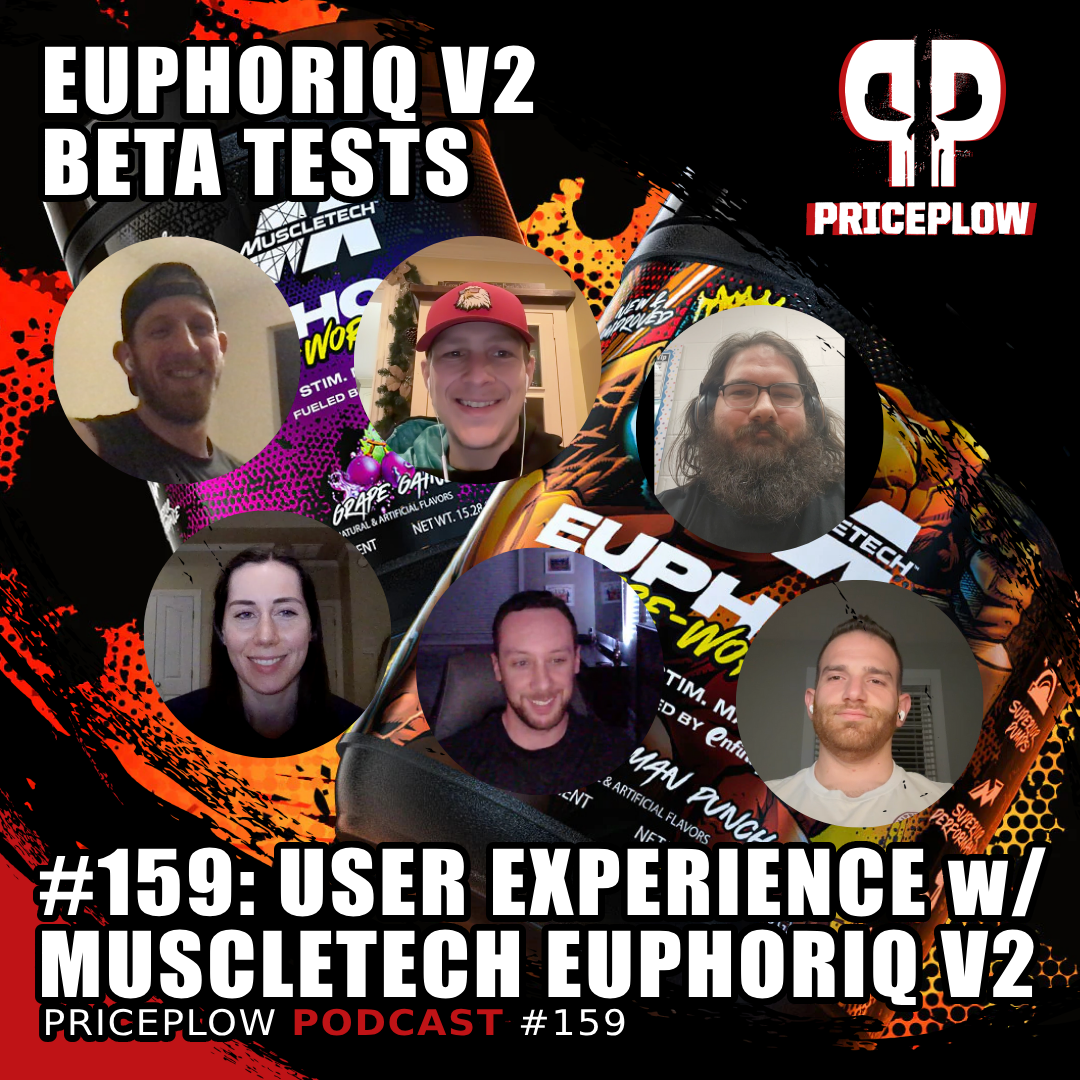
MuscleTech sent EuphoriQ V2 pre-workout beta samples to PricePlow Discord insiders, and we record their feedback on the Discord for Episode #159 on our podcast.
Ben, Mike, and a panel of beta-testers from the PricePlow Discord sit down with Dan Grasso from MuscleTech to dive into the evolution of the fan-favorite pre-workout, EuphoriQ.
Known for its balanced energy and smooth focus thanks to paraxanthine, EuphoriQ V2 takes things to the next level with increased citrulline (6g), added nitrates, doubled tyrosine (1.5g), and a touch of yohimbine (from yohimbe extract). Dan takes us through the journey from V1 to V2, while our beta testers provide their feedback on the improved formula, which maintains the original's smooth energy while adding better pumps and focus effects.
This is a first of its kind episode on the podcast, involving our crew of beta testers.
The enfinity-powered iQ Series: The Background Story
EuphoriQ is part of a three product release of enfinity-based supplements first released in 2022:
- EuphoriQ: Pre-Workout with 300 milligrams of enfinity paraxanthine (you are here)
-
MuscleTech Burn iQ Themogenic Powder also contains enfinity paraxanthine
Burn iQ Capsules: Capsule-based fat burner with 100 milligrams of enfinity per capsule
- Burn iQ Powder: Smart Thermo Fat Burning powder with 150 milligrams enfinity per scoop
These were announced by PricePlow in our article titled MuscleTech Reveals New Workout Stimulant: enfinity brand Paraxanthine which gives an overview of the lineup launched in September of 2022.
We later hosted PricePlow Podcast Episode #072 to dig deeper - we invited MuscleTech/Iovate's VP of Scientific Affairs and Product Innovation, Raza Bashir along with Ingenious Ingredients Co-Founder (and NNB Nutrition Chief Science Officer) Shawn Wells to discuss the problem and solution that enfinity attacks.
Conclusion: Unleash Your Potential with EuphoriQ V2
After a thorough review, we can happily say that MuscleTech EuphoriQ V2 is a solid upgrade to the original, especially if you want a bit more of a kick from just a dash of yohimbe. This is a top-notch pre-workout formula with great updates that'll help you push your performance in the gym.
We're glad that the game-changing enfinity® paraxanthine is still in the formula to provide clean, sustained energy.
This revamped version also introduces powerful new ingredients like betaine nitrate, yohimbe extract, and Senactiv, combining to provide more pumps, greater energy, and improved recovery. Plus, the addition of the MuscleLyte™ Electrolyte Blend will help you stay hydrated and energized throughout your toughest workouts.
Whether you're looking to boost your endurance, maximize your strength, or simply crush your fitness goals, EuphoriQ V2 is a great option to get the energy you need to perform at your best. We encourage you to try it for yourself and see what impact it can have as you push for better performance in the gym.
MuscleTech EuphoriQ Pre-Workout – Deals and Price Drop Alerts
Get Price Alerts
No spam, no scams.
Disclosure: PricePlow relies on pricing from stores with which we have a business relationship. We work hard to keep pricing current, but you may find a better offer.
Posts are sponsored in part by the retailers and/or brands listed on this page.

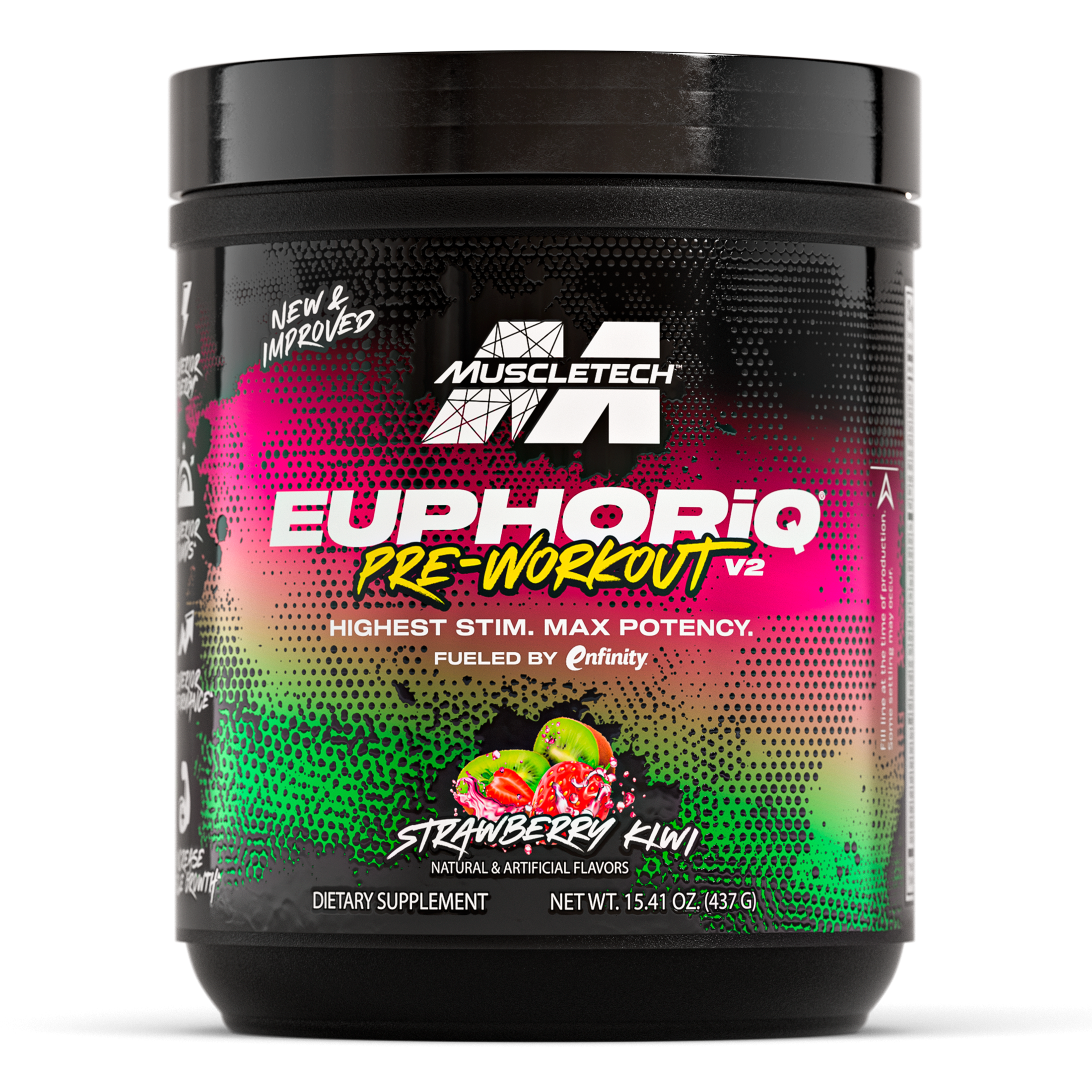
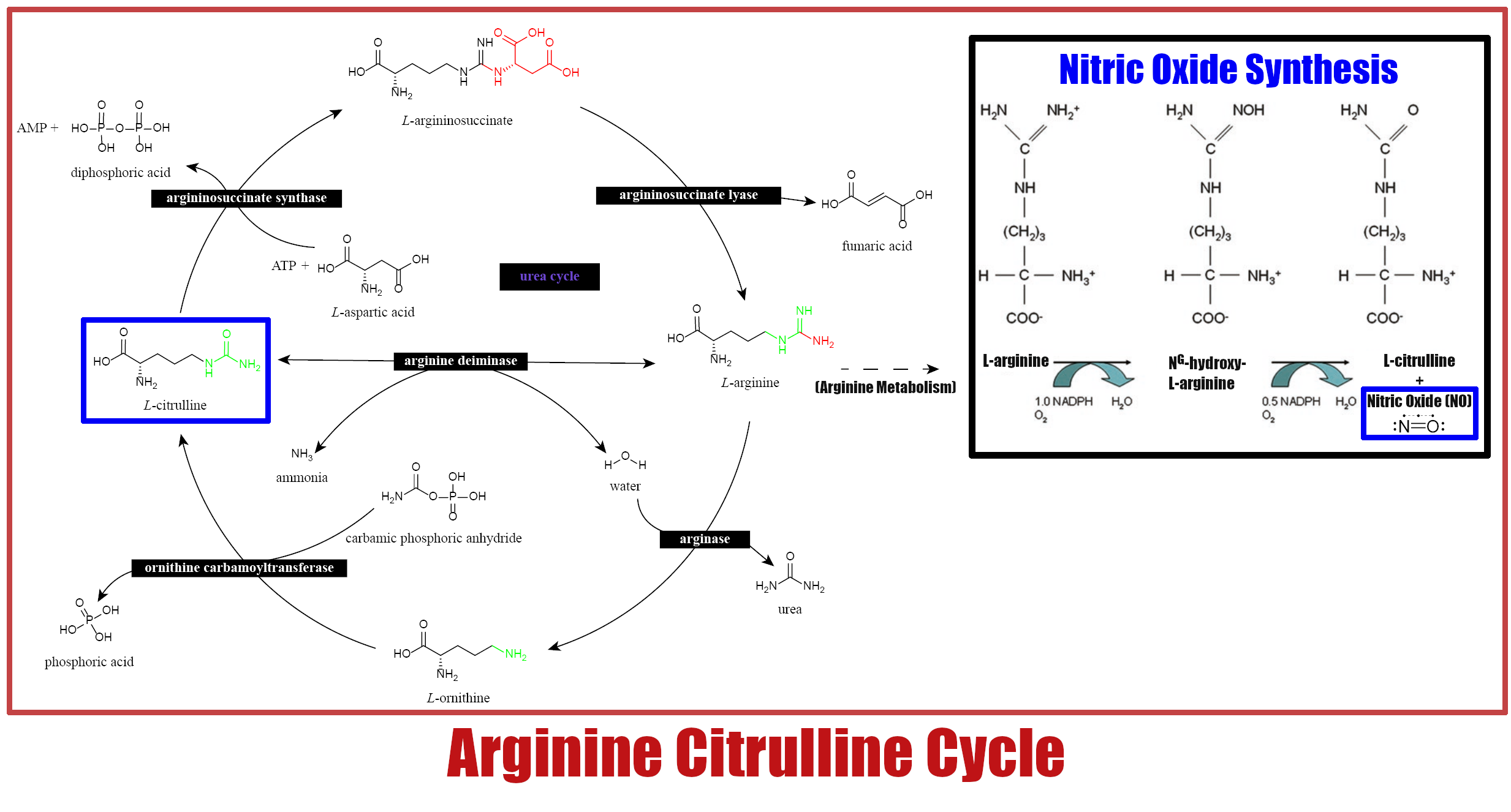
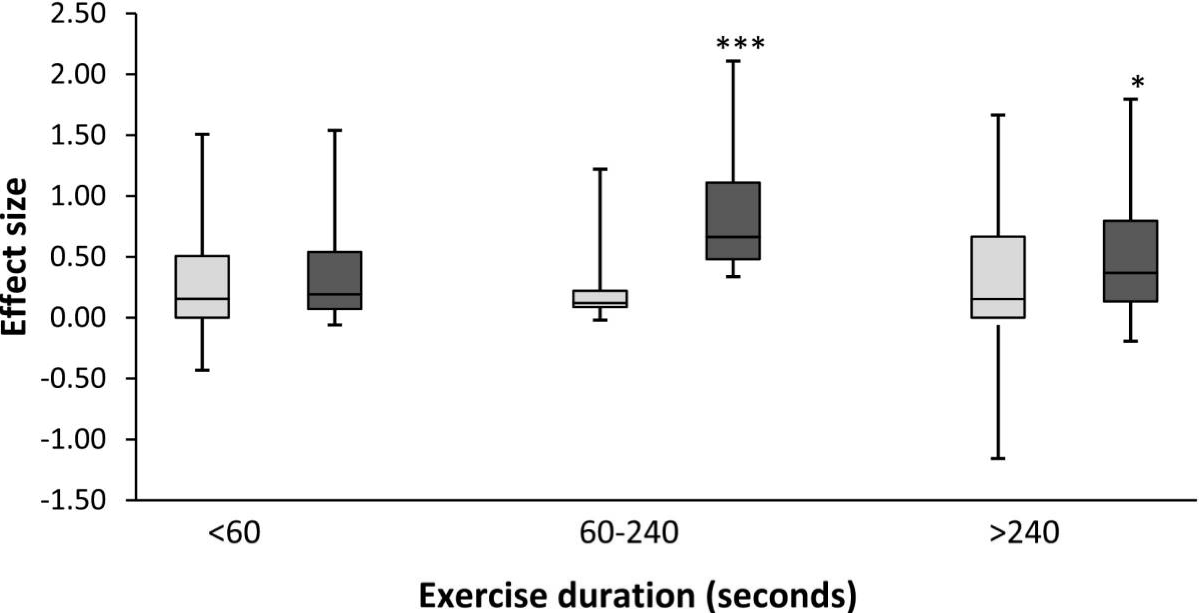



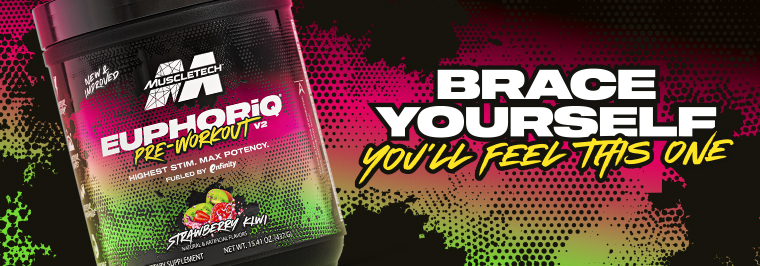


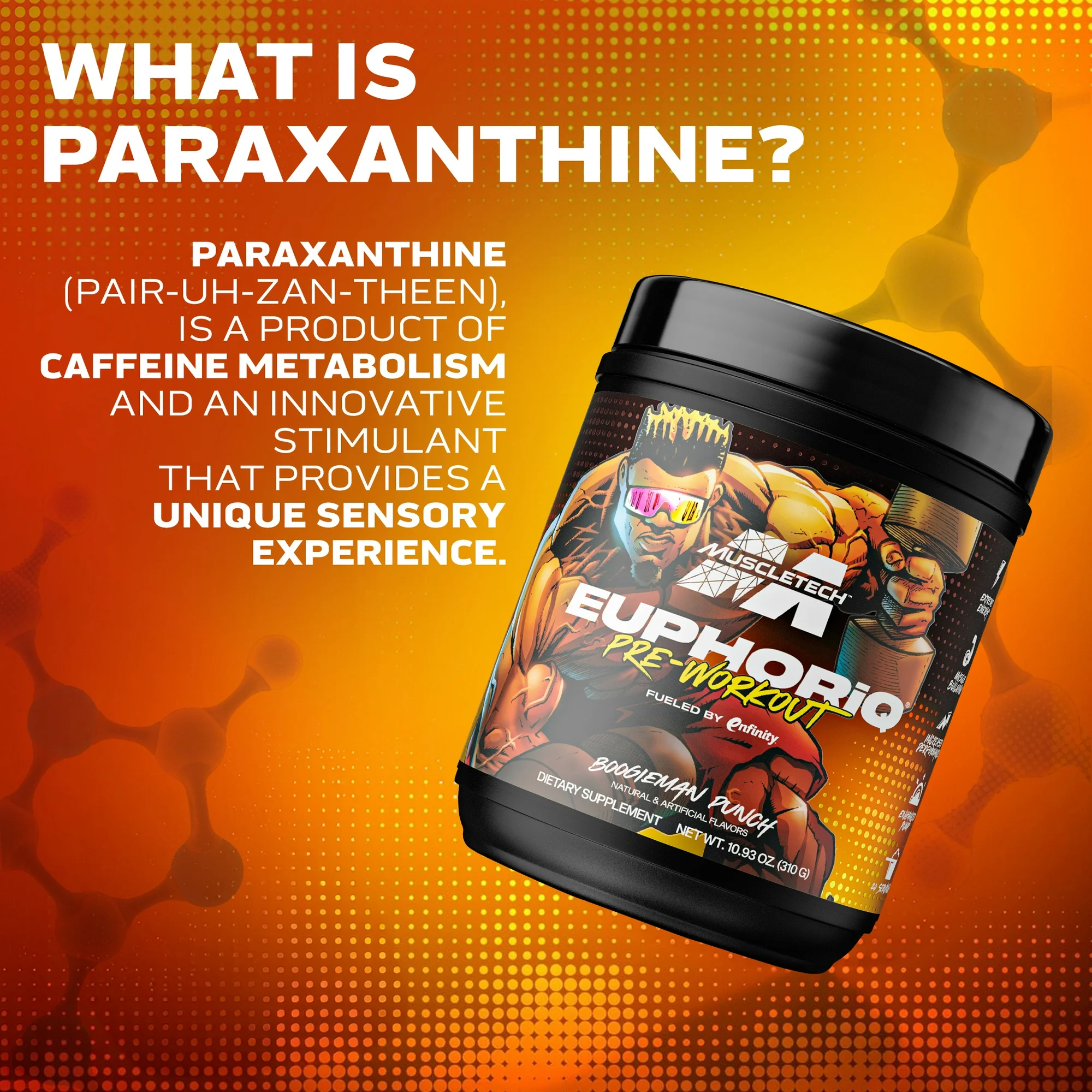


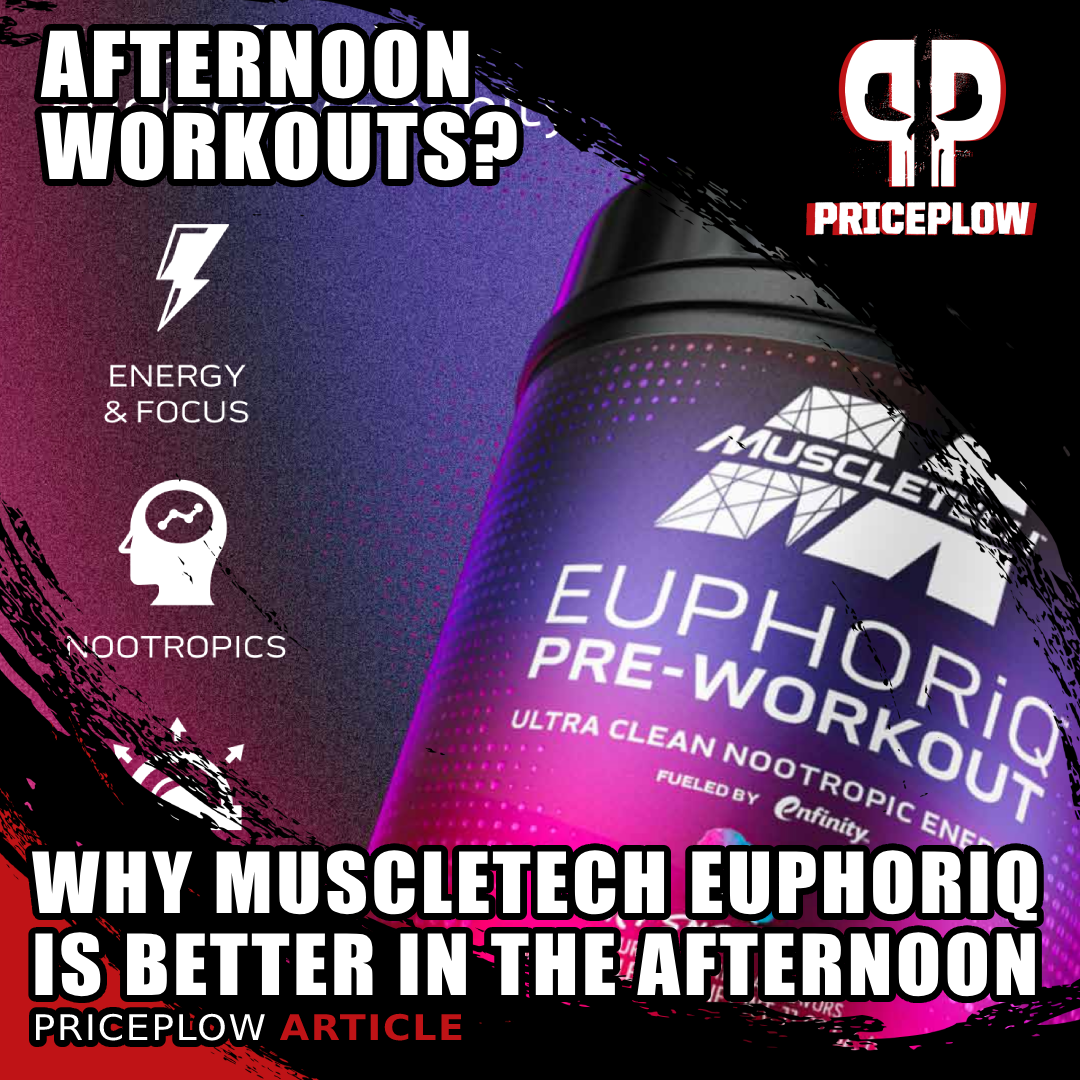
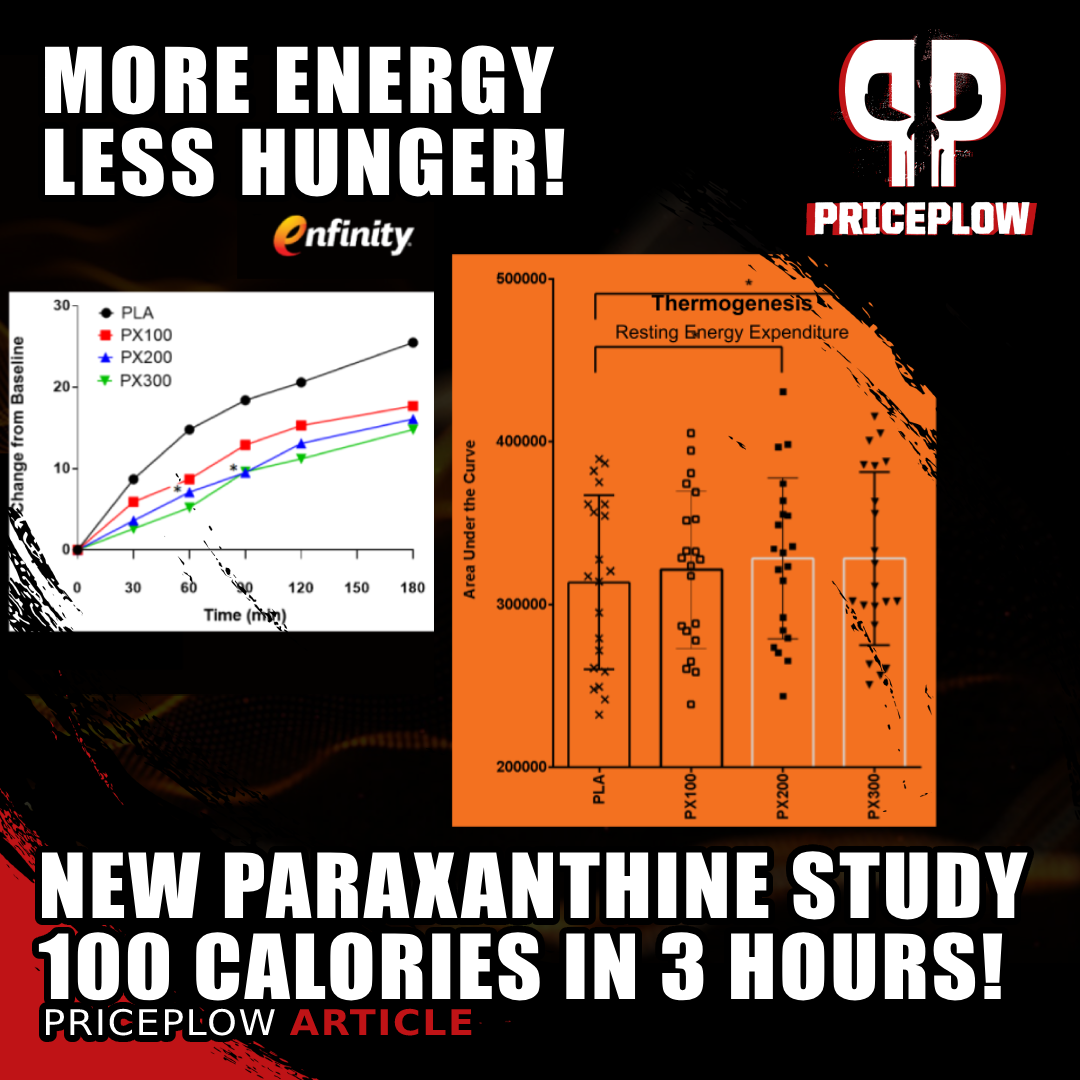
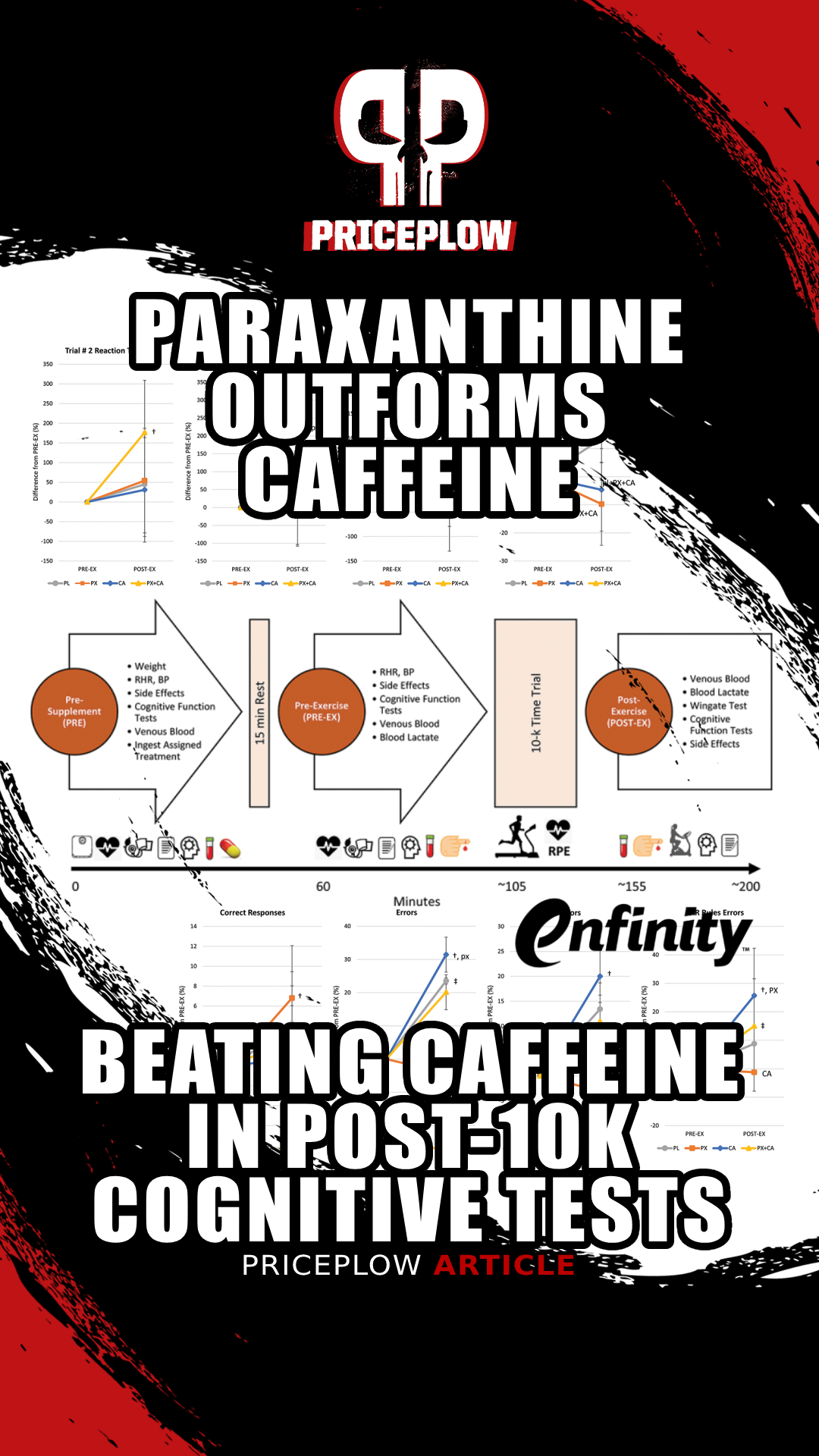

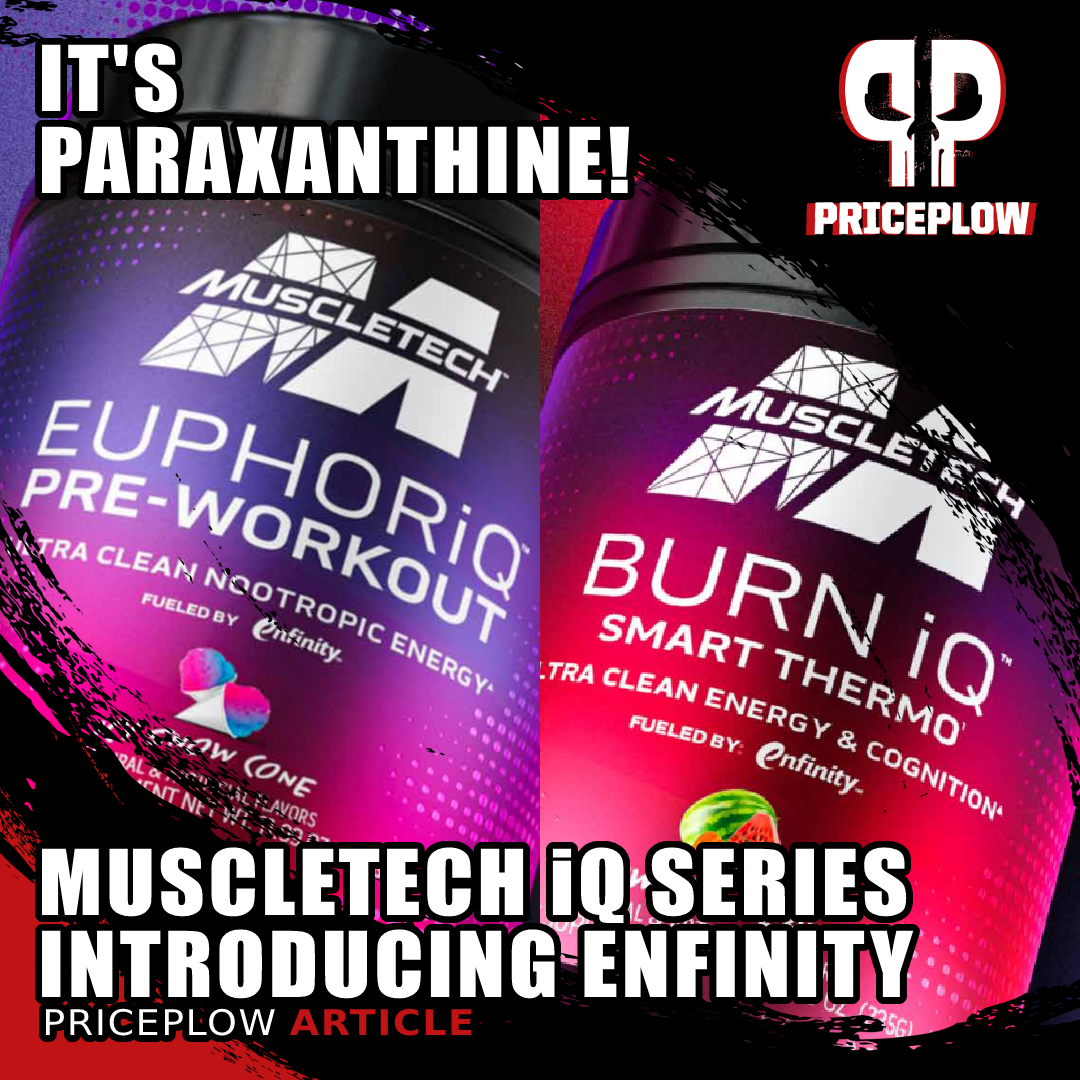
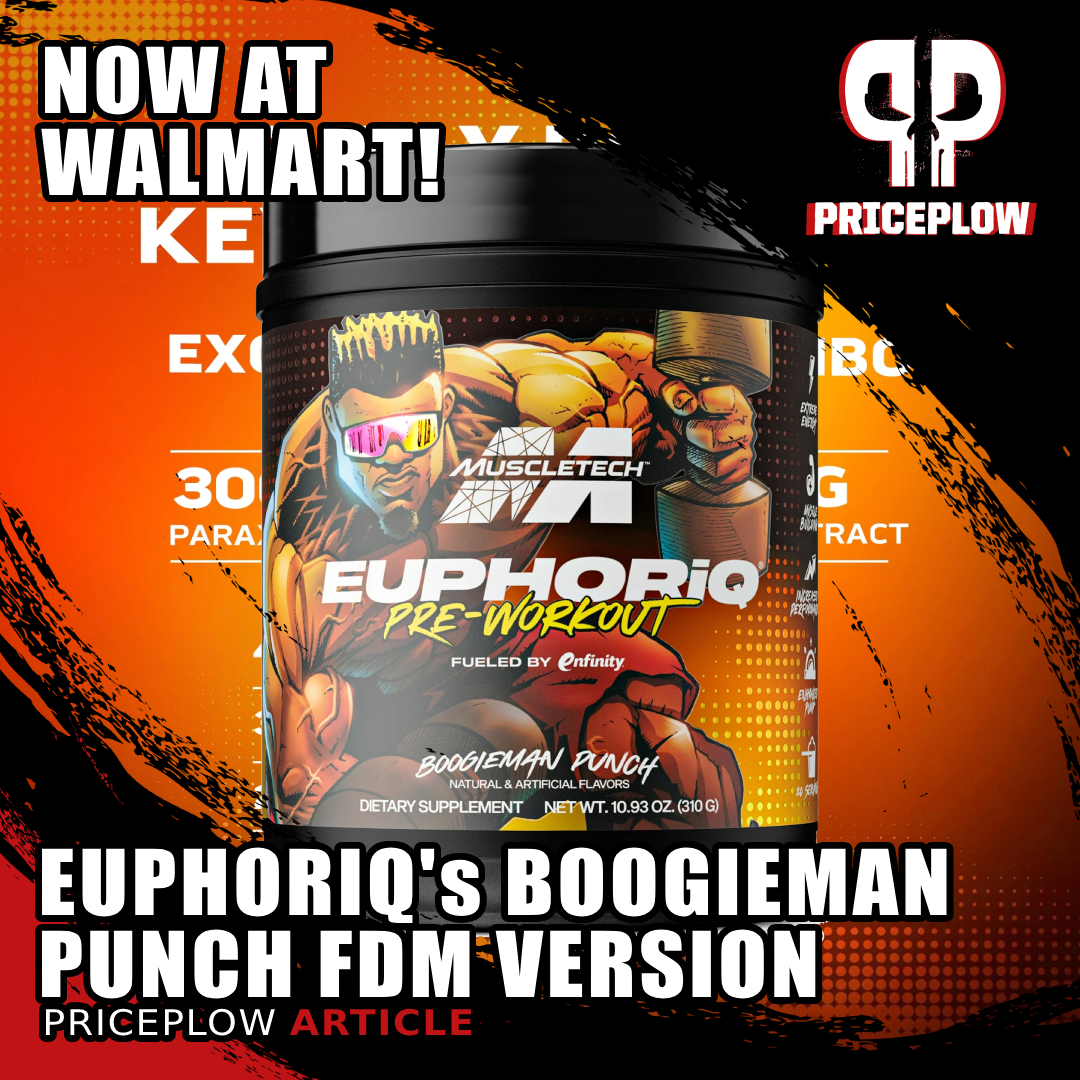
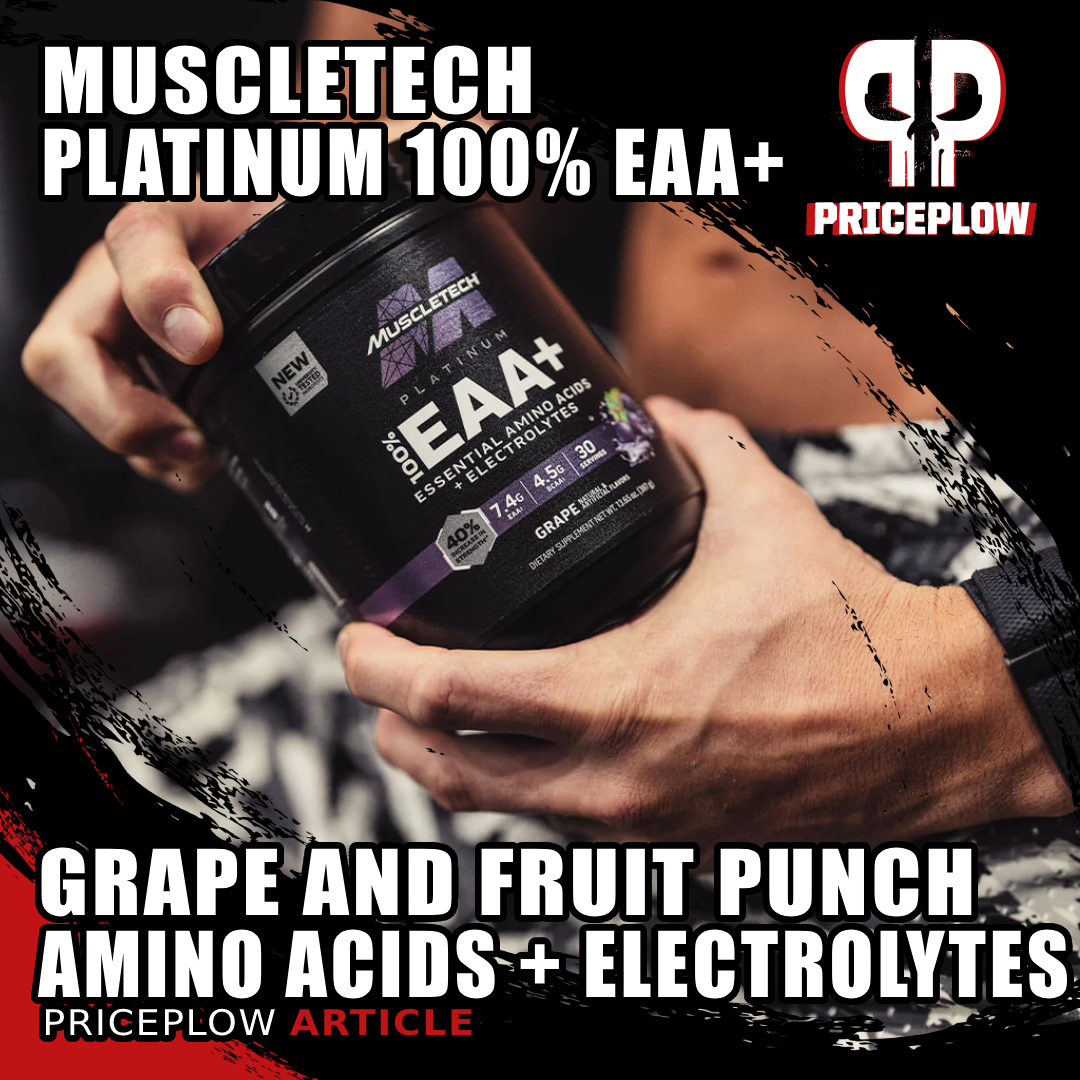


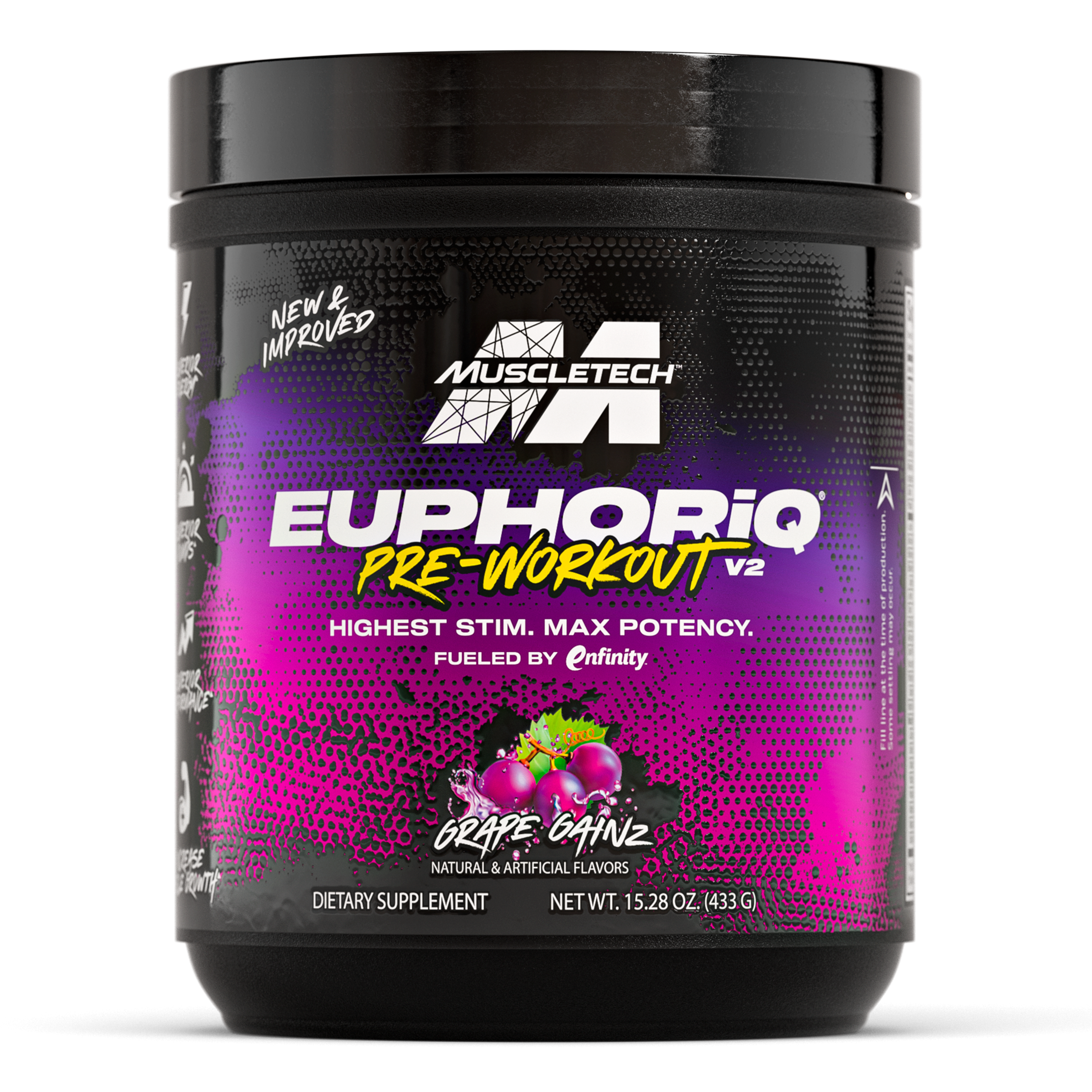


Comments and Discussion (Powered by the PricePlow Forum)